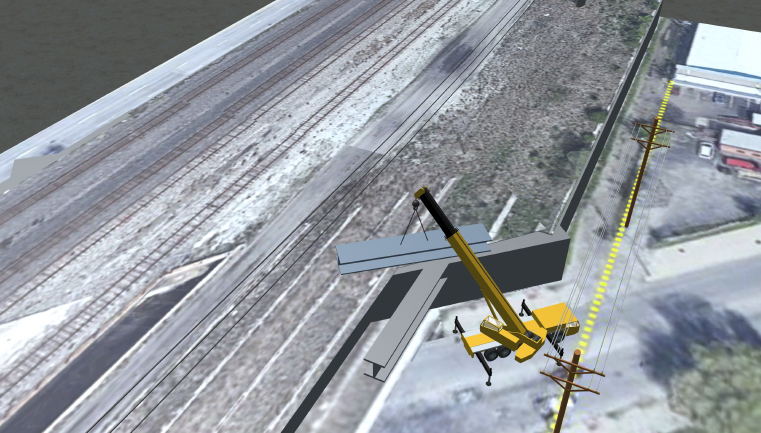Project Owner
F.H. Paschen, S.N. Nielsen
Client
Omega III, LLC
Services Provided
Structural Engineering
Demolition Procedure
Location
Chicago, IL
Year of Demolition
2022
COMED Bridge #8 Demolition Procedure
HBM Engineering Group, in collaboration with Omega III, was entrusted with the structural engineering services for the demolition plan of COMED Bridge #8 over S Commercial Avenue in Chicago. This comprehensive plan navigates the meticulous deconstruction of a vital structure with precision and safety at its core.
Bridge Data:
- Length: 109’-11”
- Width: 71’-11”
- Number of Spans: 2
- Skew: 50 degrees
- Number of Built-Up Girders: 10
- Slab Thickness: 9.5 inches
HBM’s Scope:
- Structural Engineering
- Demoliton Analysis and Procedure

Demolition Procedure:
- The plan begins with a thorough utility assessment, ensuring safety in proximity to overhead wires.
- A meticulous road closure strategy is employed with safety measures to prevent unauthorized access.
- The demolition process is slated for a 7-day duration, with Omega ensuring on-site safety and adherence to protocols.
- The removal sequence involves the careful elimination of ballast, deck, floorbeams, girders, and steel bent components.
- All steel and concrete debris are responsibly processed and disposed of at legal recycling facilities.
- Decontamination measures are instituted for workers dealing with steel assumed to have lead paint.
- A well-defined deck removal process, involving excavation and torch cutting, is executed with precision.
- Girder removal employs strategic cutting, lifting, and placement, ensuring controlled and safe procedures.
- Bent/pier removal involves torch cutting, hydraulic breaking of concrete, and responsible disposal.
- The equipment roster includes an 87K excavator, LTM 1130.51 crane, 40K loader, and skid steer.
Structural Analysis: MDX software was employed for Load Factor analysis, affirming the bridge’s robustness against demolition equipment loads. The models considered as-built conditions, section loss, and additional dead loads, ensuring a meticulous understanding of the structure’s response.





